|
Building
Revell's 1/48 scale
Mig-25 Foxbat
by "Bondo" Phil Brandt
|
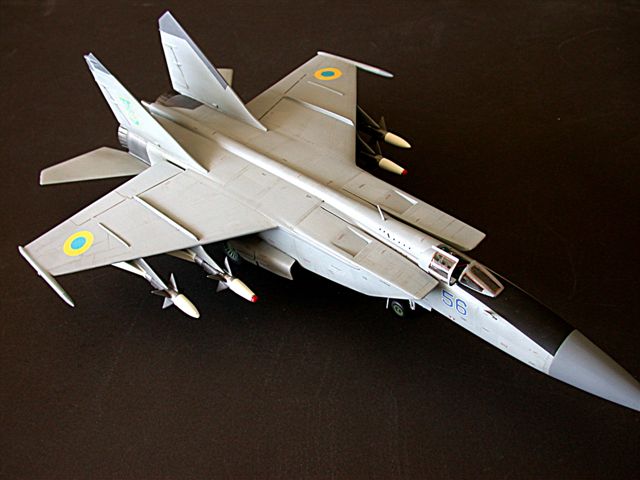 |
|
MiG-25 Foxbat |

Revell's
1/48 scale MiG-25 Foxbat is available online from Squadron
In the late Seventies boy
TAC WSO Bondo sat sleepily in a base theater seat.
We had run into one of our
squadron Intel. folks at lunch who told us that, since we weren’t flying
that afternoon, we might want to take in an” interesting” impromptu
briefing at said theater. Four serious-looking civilians – their coats
seemed to be slightly “bulky” --walked past each row of seats, giving
all us flight suited crewdogs a practiced eye, and then took up stations
at the room’s four corners. Following a one-sentence introduction by the
“wing king”, onto the stage strode a short, blond gentleman in a tan,
three-piece suit. He grasped the microphone and smilingly brought down
the house with, “Is being always great pleasure to meet Sierra Hotel
(not his actual words!) American pilots.” It was the world’s most famous
Mig driver, Lt. Viktor Belenko, formerly of the Soviet Air Force. Thus
began this curmudgeon’s fascination with the Foxbat.
The Kit
In 1976 Revell was right
on top of aviation world events and wasted no time in examining fuzzy
photos of Lt. Belenko’s super secret jet sitting forlornly off a
Northern Japan runway. It wasn’t long before their 1/48 injected Foxbat
hit the modeling streets, and Bondo snapped his up immediately at the
BX; IIRC it went for about six bucks!
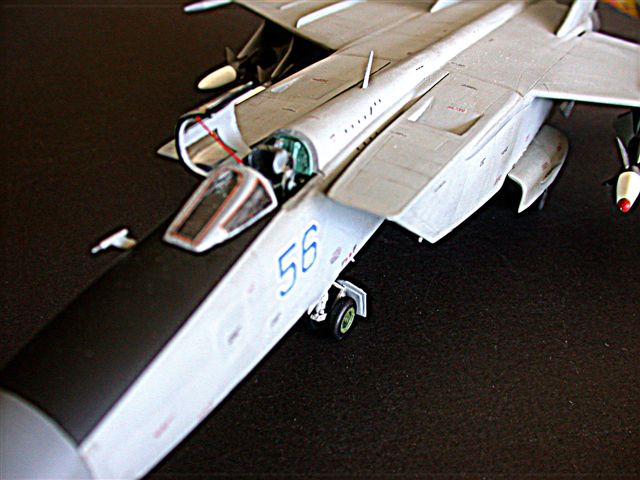
Unfortunately, the kit sat
unbuilt in the Bondo Industries storage facility for some twenty-nine
years, until Yefim Gordon’s excellent and authoritative Aerofax book on
the Mig-25/31 rekindled those earlier Mig-modeling desires.
Re-examination of the
Revell kit circa 2005 revealed just how far the model industry had
advanced in three decades. The Revell Foxbat had the requisite (and
largely incorrect) raised detail, extremely simple cockpit, gear struts
and wheel wells. In fairness, it was years after Belenko’s defection
until truly accurate information about the Foxbat was declassified.
BRINGING THINGS UP TO SPEED
Airframe General
This project began with
wet sanding off all raised detail and laboriously rescribing per the
panel line layout documented in pix and line drawings in Gordon’s book.
Wings
Before rescribing the
wing, the build’s most difficult phase was accomplished. That is,
decreasing the wing chord by three-eights of an inch throughout the
entire span.
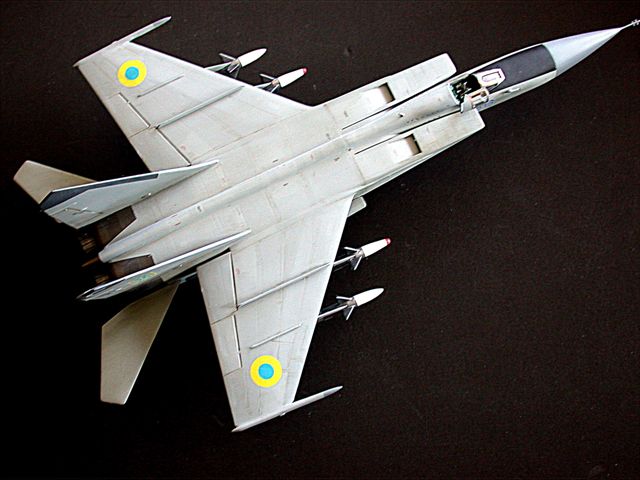
The relatively large
surface area of the altered wing required many applications of Blue
Acryl and subsequent block sanding. Next, the four wing fences were
scratch built.
Fuselage
Boundary layer bleed slots
in the tops of the large intakes were scratch built. Next, out of
nowhere comes Neomega to the modeler’s rescue with the 2005 release of a
click-fit Foxbat cockpit set. The Foxbat’s cockpit is admittedly small,
but the Neomega set really sets things off with the canopy posed open.
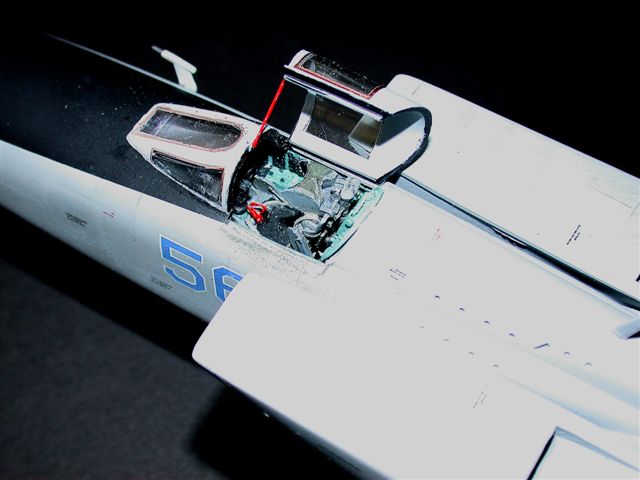
Exhaust depth is
ridiculously shallow, and Bondo decided to head this off at the pass by
simply scratchbuilding FOD covers, the red-orange color of which helps
to complement many square inches of boring gray airframe.
Intakes were blocked off
about three inches back with black-painted plastic sheet.
Weapons
The kit’s large IR and
radar missiles were used, with contrasting metal shades per various pix.
Soviet/Russian airframes
spend much of the time exposed to the rigors of winter, and the concept
of wash racks doesn’t seem to have taken hold. Accordingly, the modeler
can apply as much wash, dust and dirt as desired, and somewhere in the
Eurasian vastness of the former Soviet Union there will be an airframe
that matches! This Foxbat model was primered with automotive
lacquer-based gray primer and wetsanded with up to 8000 grit Micromesh.
Two very closely related bluish gray shades were custom mixed in Polly
Scale using the TLAR (That Looks About Right) method . The variegated
gray panels help to break up overall gray monotony of such a large
fighter airframe. A muddy, brownish black oil wash was applied to all
panel lines and was brushed vertically on portions of the fuselage and
vertical fins to simulate the effect of rain and snow rolling off the
dirty surface in the grip of gravity. Three Alclad shades were applied
to the afterburner area.
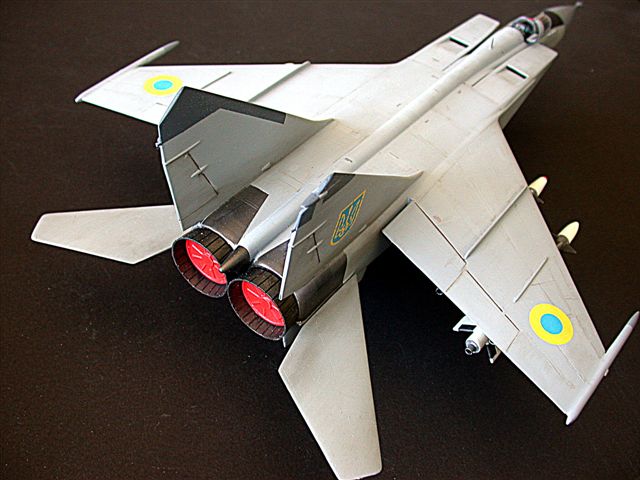
A pic from the Gordon book furnished this modeler’s inspiration for the
overall scheme. Ukrainian Air force decals were filched from the Amodel
Tu-95 Bear kit.
This retired TAC puke has
never forgotten his decades-ago serendipitous opportunity to witness the
riveting Cold War testimony of a brave “Evil Empire” warrior. We all
left that theater with a renewed appreciation of our own country's
ideals and even more dedication, if that was possible, to our USAF
mission.
You, too, can read Viktor
Belenko’s fascinating story in his autobiography, “Mig Pilot”,
McGraw-Hill (1980) ISBN 0-380-53868-7.
Click on the thumbnails
below to view larger images:
Model, Images and Text Copyright ©
2006 by Phil Brandt
Page Created 21 February, 2006
Last Updated
21 February, 2007
Back to
HyperScale Main Page
|
Home
| What's New |
Features |
Gallery |
Reviews |
Reference |
Forum |
Search